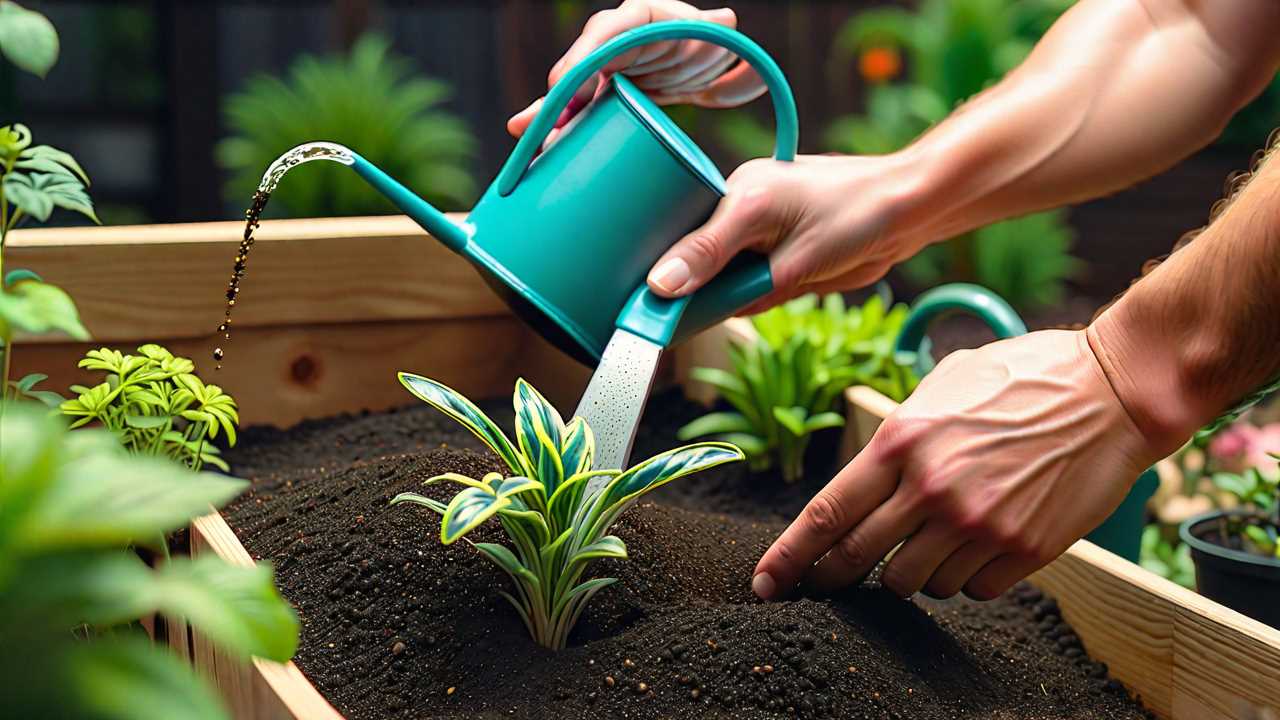
Imagine your container garden thriving with lush greenery, vibrant blooms, and bountiful harvests. But to achieve this, you need to master the art of maintaining soil health. From selecting the vital soil mix to perfecting watering techniques and preventing pest invasions, each step plays an essential role in nurturing your plants. So, how can you guarantee your container garden soil remains fertile and supportive of your plant's growth? Let's uncover the secrets to cultivating a thriving oasis right on your doorstep.
Choosing the Right Soil Mix
When picking a soil mix for your container garden, take into account the specific needs of your plants and the container's drainage requirements. The ideal soil mix for container gardening should be well-draining to prevent waterlogging, which can lead to root rot. A recommended mix is one part peat moss or coconut coir, one part perlite or coarse sand, and one part compost. Peat moss or coconut coir helps with moisture retention, while perlite or sand improves drainage, and compost provides essential nutrients for plant growth.
Make certain that the soil mix is sterile to prevent diseases and pests. You can achieve this by purchasing a high-quality soil mix or sterilizing your mix by baking it in the oven. Additionally, consider the pH level of the soil mix to match the plants' requirements. Most plants prefer a slightly acidic to neutral pH level.
Regularly monitor the moisture levels in your container garden to ensure the soil mix is neither too dry nor waterlogged. Adjust your watering schedule based on the plant's needs and environmental conditions.
Proper Watering Techniques
Consider the following guidelines to maintain proper watering techniques in your container garden. To prevent overwatering, make sure your containers have drainage holes at the bottom. This allows excess water to escape, preventing waterlogged soil.
When watering, do so slowly and evenly until you see water coming out of the drainage holes. This guarantees that water reaches the entire root system. Check the moisture level of the soil regularly by inserting your finger about an inch deep into the soil. Water your plants only when the top inch of soil feels dry to the touch.
Early mornings are the best time to water your plants as it allows for optimal absorption before the heat of the day. Avoid watering in the evenings to prevent fungal diseases. During hot weather, you may need to water more frequently. Mulching the soil surface can help retain moisture and reduce the frequency of watering.
Regular Feeding and Fertilizing
To maintain soil health in your container garden, make sure to regularly feed and fertilize your plants. Proper feeding and fertilizing provide essential nutrients for plant growth and help prevent nutrient deficiencies that can lead to poor health and reduced yields.
Here are some key tips to effectively feed and fertilize your container plants:
- Choose the Right Fertilizer: Select a balanced fertilizer specifically formulated for container plants, with an NPK ratio suitable for your plant types.
- Follow a Feeding Schedule: Establish a consistent feeding schedule based on your plants' needs, typically every 2-4 weeks during the growing season.
- Avoid Overfeeding: While nutrients are important, overfeeding can harm your plants. Always follow the recommended dosage instructions on the fertilizer package.
Monitoring for Pests and Diseases
Regularly inspect your container plants for pests and diseases to maintain their health and prevent potential damage. Start by checking the foliage, stems, and soil surface for any signs of pests such as holes in leaves, webbing, or sticky residue. Common pests in container gardens include aphids, spider mites, and caterpillars. If you notice any pests, consider using insecticidal soap or neem oil to manage the infestation.
In addition to pests, keep an eye out for symptoms of diseases like wilting, yellowing leaves, or unusual spots. Fungal diseases such as powdery mildew can quickly spread in container gardens, affecting plant growth. To prevent diseases, avoid overhead watering, provide adequate air circulation, and remove any infected plant material promptly.
Consider using sticky traps to monitor pest activity and regularly clean your containers and tools to prevent the spread of diseases.
Frequently Asked Questions
Can I Reuse Soil From Last Season's Container Garden?
Sure, you can reuse last season's container garden soil, but it's essential to refresh it with compost or organic matter to replenish nutrients. Avoid compacted or diseased soil. A little effort goes a long way in nurturing your plants.
How Do I Prevent Soil Compaction in Containers?
To prevent soil compaction in containers, mix in organic matter like compost or peat moss, which improves soil structure and drainage. Regularly aerate the soil using a small hand tool to prevent compaction and promote healthy root growth.
Are There Any Natural Alternatives to Chemical Fertilizers?
To nourish container garden soil naturally, consider compost, aged manure, or organic fertilizer. These alternatives can improve soil health without harsh chemicals. Rotate crops, practice mulching, and monitor moisture levels for thriving plants.
Should I Be Concerned About Ph Levels in Container Soil?
You should monitor pH levels in container soil regularly to guarantee the best growth conditions for your plants. Use a pH meter to test the soil and adjust acidity levels accordingly by adding amendments like lime or sulfur.
How Can I Improve Drainage in My Container Garden Soil?
To improve drainage in your container garden soil, incorporate coarse materials like perlite or sand. Make sure containers have proper drainage holes. Raise containers slightly with pot feet. Water plants appropriately to maintain soil moisture balance.
 SportsHollywoodLifestyleFashionHome & GardenTrendsPrivacy PolicyTerms And Conditions
SportsHollywoodLifestyleFashionHome & GardenTrendsPrivacy PolicyTerms And Conditions
